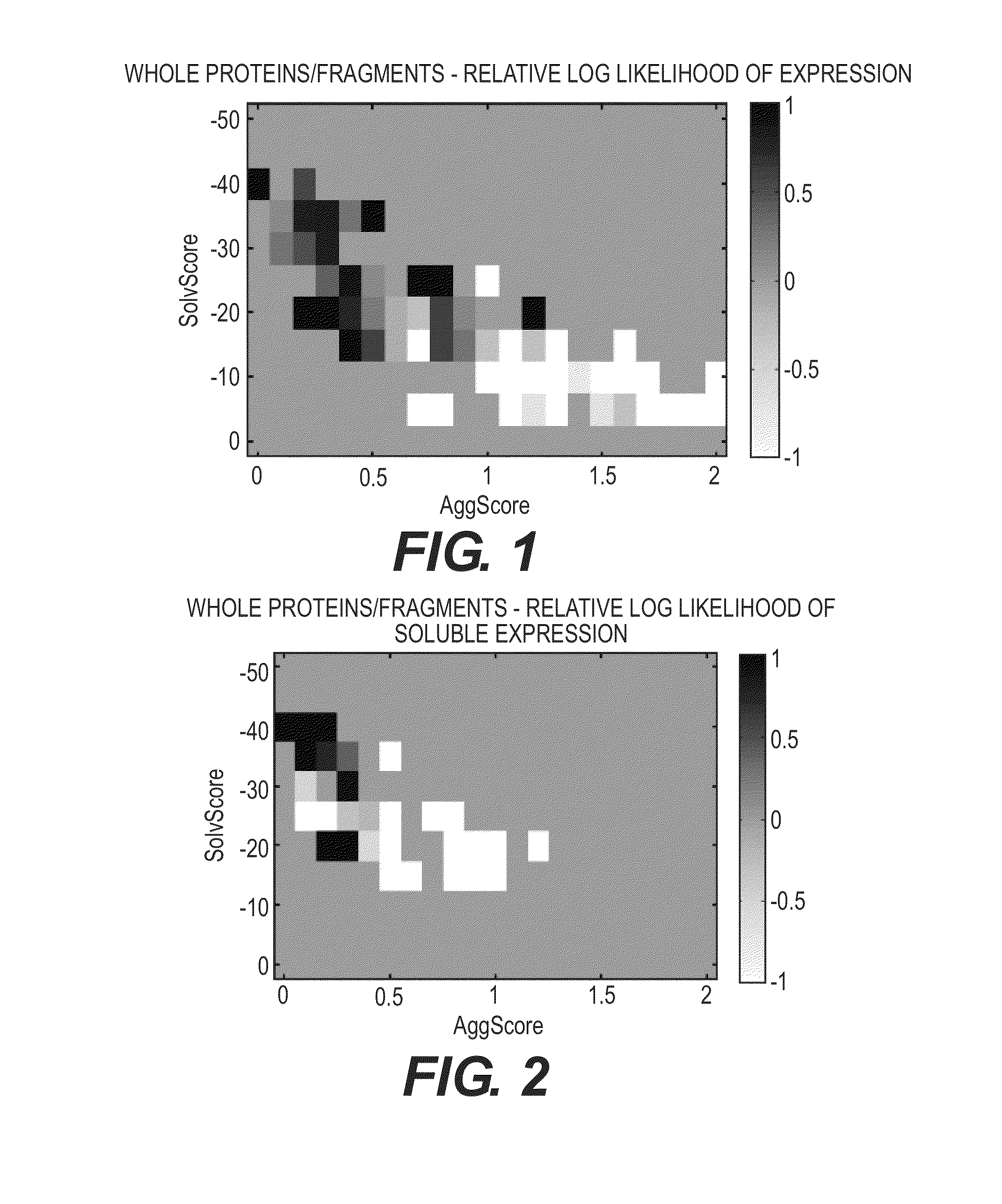Charged Nutritive Proteins and Methods
a nutritive protein and protein technology, applied in the field of chargeable nutritive proteins and methods, can solve the problems of protein positively affecting energy expenditure and lean body mass, protein cannot synthesize certain amino acids, and most fruits and vegetables are poor sources of protein, so as to maintain or increase at least one of muscle mass, muscle strength and functional performance, and increase thermogenesis in a subject
- Summary
- Abstract
- Description
- Claims
- Application Information
AI Technical Summary
Benefits of technology
Problems solved by technology
Method used
Image
Examples
example 1
Identification of Proteins Containing Ratios of Essential Amino Acids, Branch Chain Amino Acids, and Leucine Greater than or Equal to Gelatin
[0293]The UniProtKB / Swiss-Prot (a collaboration between the European Bioinformatics Institute and the Swiss Institute of Bioinformatics) is a manually curated and reviewed protein database, and was used as the starting point for protein identification. Proteins from the edible species Solanum lycopersicum, Zea mays, Oryza sativa subsp. Japonica, Glycine max, Ovis aries, Pisum sativum, Spinacia oleracea, Oryza sativa subsp. Indica, Triticum aestivum, Sus scrofa, Prunus persica, Capsicum annuum, Malus domestica, Thunnus albacares, Capra hircus, Cicer arietinum, Salmo salar, Meleagris gallopavo, Solanum tuberosum, and Agaricus bisporus having greater than or equal to fifty (50) amino acids were sampled as targets for this example. This provided a set of 8,415 proteins for evaluation. The amino acid content, percentage of essential amino acids (“EA...
example 2
Protein Expression
[0294]Genes encoding nutritive proteins of this disclosure were codon optimized for expression in Escherichia coli and synthesized by either LifeTechnologies / GeneArt or DNA 2.0. Genes were designed to express the native protein or to contain one of two amino-terminal tags to facilitate purification:
(SEQ ID NO: 495)MGSHHHHHHHH(SEQ ID NO: 494)MGSSHHHHHHSSGLVPRGSH
[0295]These gene constructs were inserted into the pET15b plasmid vector (Novagen) using NcoI-BamHI restriction sites (in case of the first tag) or using the NdeI-BamHI restriction sites (in the case of the second tag). All restriction enzymes were purchased from New England Biolabs. Plasmids were transformed into Escherichia coli T7 Express (New England Biolabs) and selected on lysogeny broth (LB) plates containing 100 mg / l carbenicillin. A single colony was picked, grown to OD600nm≈0.6 in LB with 100 mg / l carbenicillin, and stored as a glycerol stock (in LB with 10% glycerol (v / v)) at −80° C., to serve as a...
example 3
Scaled Up Production of Recombinant Nutritive Proteins
[0298]A representative protocol for producing quantities of nutritive proteins as described in this disclosure is as follows.
[0299]5 ml LB with 100 mg / l carbenicillin (in a 50 ml baffled Pyrex shake flask) is inoculated with a stab from the glycerol stock of a recombinant E. coli strain comprising a recombinant gene encoding a nutritive protein and grown until late exponential phase (OD600 nm≈2) at 37° C. and 250 rpm. A 2.51 Ultra Yield Flask (Thomson Instrument Company) is inoculated with 500 ml sterile water and enough EnBase EnPresso™ tablets (BioSilta) to formulate 500 ml growth medium. This medium is supplemented with 100 mg / l carbenicillin, 0.001% Industrol 204 antifoam, and 0.6 U / l EnzI'm (BioSilta). The shake flask is inoculated to OD600 nm=0.05 and grown 16 hr at 30° C. and 250 rpm. The growth medium is supplemented with EnPresso™ Booster tablets (BioSilta), 1.2 U / l EnzI'm, and 1 mM IPTG to induce heterologous protein pr...
PUM
| Property | Measurement | Unit |
|---|---|---|
| solubility | aaaaa | aaaaa |
| concentration | aaaaa | aaaaa |
| pH | aaaaa | aaaaa |
Abstract
Description
Claims
Application Information
 Login to View More
Login to View More - R&D
- Intellectual Property
- Life Sciences
- Materials
- Tech Scout
- Unparalleled Data Quality
- Higher Quality Content
- 60% Fewer Hallucinations
Browse by: Latest US Patents, China's latest patents, Technical Efficacy Thesaurus, Application Domain, Technology Topic, Popular Technical Reports.
© 2025 PatSnap. All rights reserved.Legal|Privacy policy|Modern Slavery Act Transparency Statement|Sitemap|About US| Contact US: help@patsnap.com


